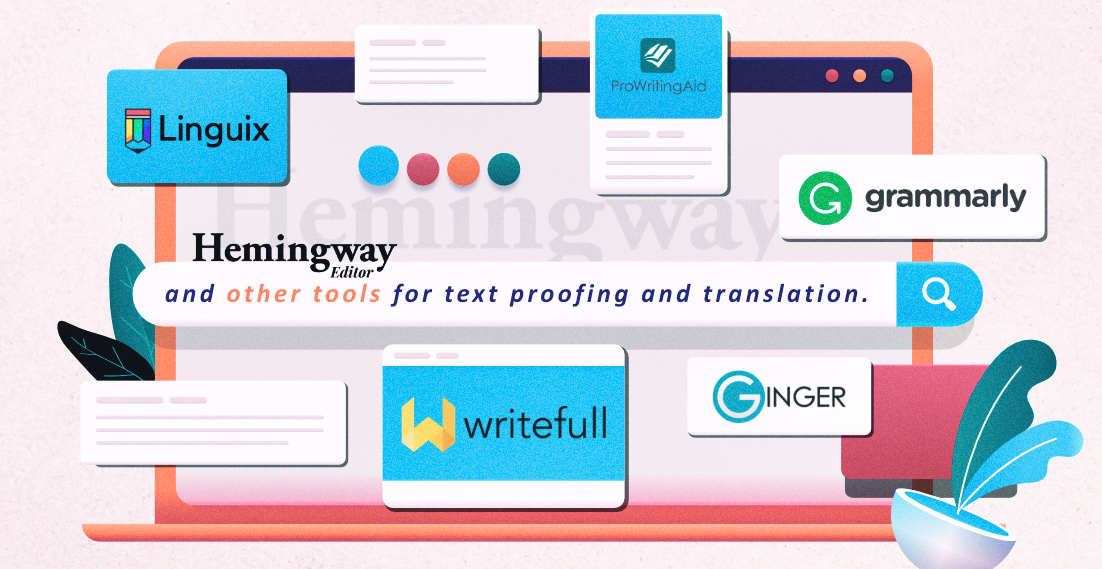What are business models and what are the types?

One of the most important steps in starting a business is proper planning. This process includes a selection of a business model, which is essential when it comes to the functioning of a large number of enterprises. Its preparation can increase the company’s profit and contribute to its success. What exactly are business models? What are their types and which model is best for your business? Read on to find out!
Flawless translation for your multilingual purposes
Business model of an enterprise
A business model is an outline of how a given enterprise wants to generate income and increase profit. It is a long-term plan that covers financial, strategic and operational issues. The business model describes how the enterprise wants to finance its activities, what its goals are, how it wants to achieve them and what expenses it will have to deal with.
An interesting definition of a business model can be found in “Business Model Generation: A Handbook for Visionaries”. It states that this is a plan that describes how an organisation creates value for the customer and outlines the profits the company achieves from that value created.
Why should you create a business model for your company?
Why is it a good idea to create a business model for your company? It will allow you to organise information about a given product and identify the strengths and weaknesses of a certain project. It also makes it possible to find out what makes a given unit stand out from other companies. Preparation of such a plan is crucial for building and maintaining a competitive advantage. Keep in mind, however, that a business model is not a guarantee of success. It can only increase its chances.
Key elements of a business model
As we have already mentioned, each business model should define how the company wants to create and deliver value to the customer. Moreover, a well-prepared plan should answer the following four basic questions.
- Who is the customer of the company? – The plan should define the target audience for your product or service. When creating a business model, it is necessary to define a persona.
- What value is the company offering to its customers? – The plan should contain a detailed description of the product or service offered. It is also necessary to specify the value for the customers (description of their needs and expectations).
- How does the company deliver value to its customers? – The plan should define the tools, methods and technologies that will be used to deliver value to its customers.
- Why should the customer choose the company’s offer? – The plan should identify the value of the company. It is also important to define what makes the company different from the competition.
What are some examples of business models?
Are you wondering what the examples of business models are? There is the subscription model, in which the company charges a subscription fee (monthly or annual) for access to the service, and it is quite popular. This type of procedure is used by Netflix, for instance, a platform offering access to films and series. A characteristic feature of this model is the possibility of the user resigning from the service after the end of the billing period. For this reason, it is very important to prepare an appropriate promotional campaign aimed at customer retention.
Other types of business models
Are there any other types of business models? Certainly! There are quite a few of them. A freemium service is a noteworthy option. In this model, a company offers access to its products or services in both free and paid (so-called premium) versions. In the case of free use of a service, the vast majority of its key features are limited. To unlock them, the customer must purchase a subscription. An example of a company that uses this model is Spotify. This service offers free access to music with ads appearing between songs. Users, wanting to listen to their favourite songs without interruptions can decide to buy the premium version and get rid of ads.
E-commerce business models
It is also worth getting acquainted with e-commerce business models. Their basic division is based on the type of relationship with the recipients. The following e-commerce business models are available:
- B2B (Business-to-Business),
- B2C (Business-to-Customer),
- C2C model (Customer-to-Customer),
- P2P (Peer-to-Peer),
- M-commerce (Mobile Commerce).
Online-based business models
B2B is an online business model that is based on transactions concluded between two companies. Enterprises exchange products, services or information with each other. The B2C model is a traditional retail model. The company sells its services to individual customers in this case. The C2C model is based on the exchange of goods between consumers, e.g. through auctions.
What is the P2P model? It allows users to directly share files over the Internet without having to transfer them through the main server. On the other hand, the M-Commerce model makes it possible to conclude transactions using wireless devices.
How to create new business models?
It’s important to note that all the above models can be freely modified and adapted to the needs of your own company. Creating a new plan also turns out to be an interesting option. In this case it is possible to reduce certain expenses, come up with innovative payment methods or find more effective methods of marketing and sales.
How to create new business models? You can use the Business Model Canvas method for mapping the key elements of the project. It involves the preparation of a special table and answering specific questions in the appropriate fields. There are 9 areas to be distinguished, including: key partners, resources, activities, value proposition, customer relations, channels, customer segmentation, cost structure and revenue structure.
Blocks in Business Model Canvas
The above-mentioned areas create a certain entirety, which ultimately becomes a complete business model of the company. It is good to know what questions are contained in each of the individual blocks, and they are as follows:
- Key partners: What companies or organisations are necessary in order for the undertaking to operate properly? What are the key activities of the partners?
- Key resources: What key resources does the business need to offer a value proposition? What resources do the channels require for reaching customers and establishing relationships with them?
- Key actions: What actions does the company need to take to deliver a value proposition to customers? What actions do the channels require for reaching customers and establishing relationships with them?
- Value proposition: What value is the company offering to its customers? What challenges do they face? What is crucial for them? What are their problems and how does the company intend to solve them?
- Customer relationship: What kind of relationship do customers expect with the company? Do they need personal support or a quick and automatic service?
- Channels: Where can the company source its customers? What channels does the company want to use to reach its customers?
- Customer segments: Who is the company’s customer? Who does the company offer value to?
- Cost structure: What costs does the company’s business model generate? What financial outlays are generated by the key resources, activities and partners?
- Revenue structure: What are customers willing to pay for? For what and how much will they pay?
Business models and translation
Is it worth thinking about business translation at the stage of designing a business model? Certainly! This applies specifically if you are working on one of your foreign market entry strategies. This is a good time to decide whether you will need standard translation, localization services, or maybe even transcreation. This will allow you to estimate the costs of starting the expansion process into foreign markets, and thus to develop strategic financial indicators.
Is it worth preparing a business model for your company?
Whether you already have your own company or are just at the stage of establishing it, you should prepare an appropriate business model. It is highly probable that it will help you succeed, organise all your activities and set achievable goals. Preparing such a plan can be a challenging and time-consuming task. Nevertheless, it is still worth creating it and improving the performance of your enterprise.
Marketing translation as the key to success of the fashion industry. Cooperation with a popular fashion brand
We cooperated with many customers on a daily basis. They include local companies, international enterprises and well-known brands. What are the similarities between all of them? Everyone expects high-quality translations that will help in business development. Additionally, professional translations affect their image, contribute to the opinions of recipients and are the decisive factor when it […]
Hemingway Editor and other tools for text proofing and translation
Typically, content writers first note down the message they wish to put across to their audience. Then, they re-read and edit the text. This way, they can achieve better readability, understanding and structure, and at the same time they can correct any errors in the content. It is a complex process, but fortunately there are […]
Translation of advertising slogans – how not to fall into the language trap?
Advertising translation involves the process of transferring advertising messages from one market to another. The advertising discourse is created in a language that is not only a communication tool, but also an expression of culture. This makes ad translation a highly accuracy-demanding activity. Translating slogans requires both a cultural and linguistic connection. Adapting a brand […]
Top 8 Languages for E-commerce purposes: Boosting Global Reach Through Effective Translation
Do you manage an e-shop and want to source customers abroad to increase profit? Translation will be the basis for reaching foreign recipients with your offer. You need to start speaking their local language and adjust product descriptions or service descriptions to the country where you intend to sell them. This process of adapting your […]



